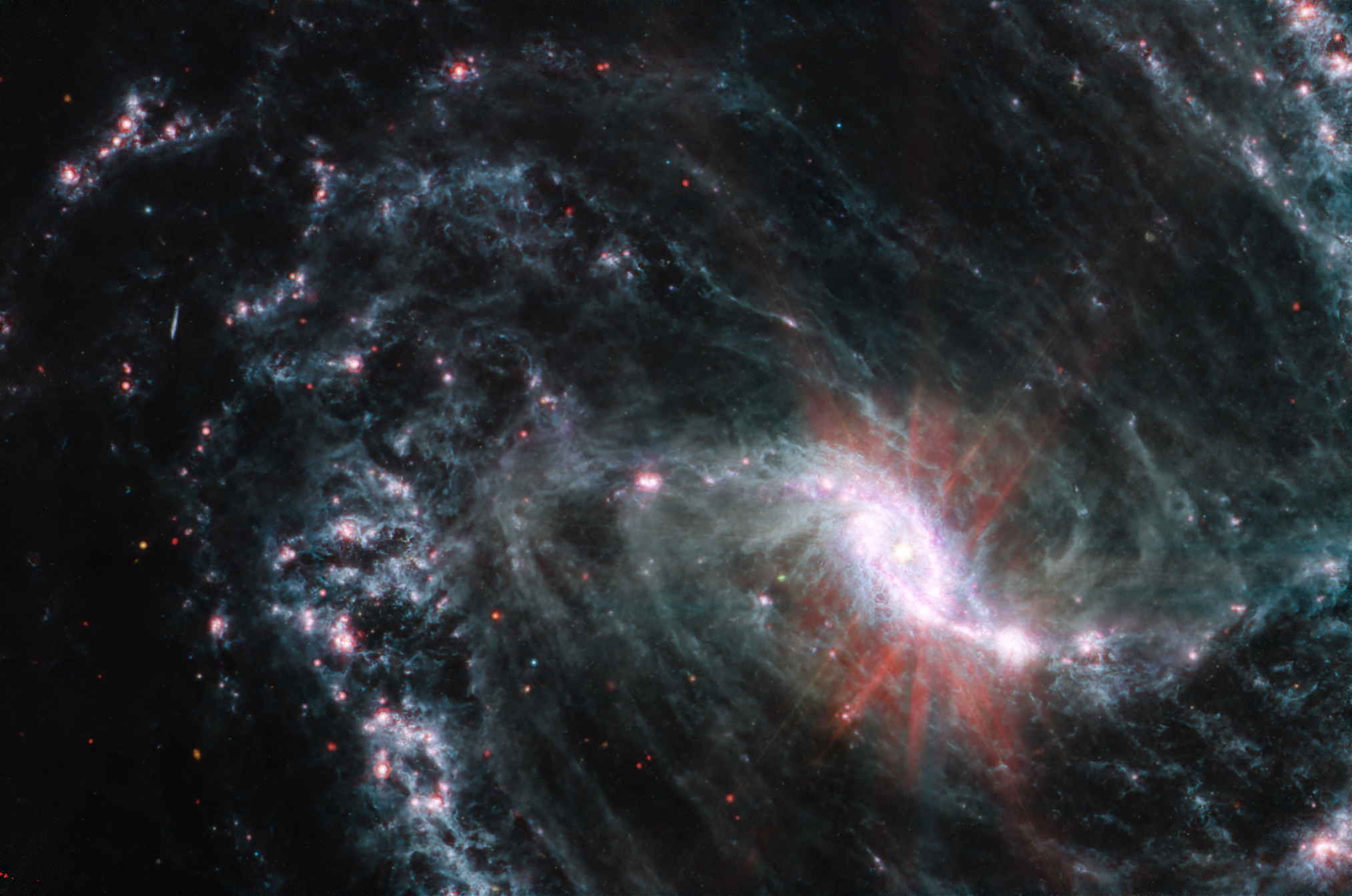1 min read
NGC 1365 (MIRI Compass Image)
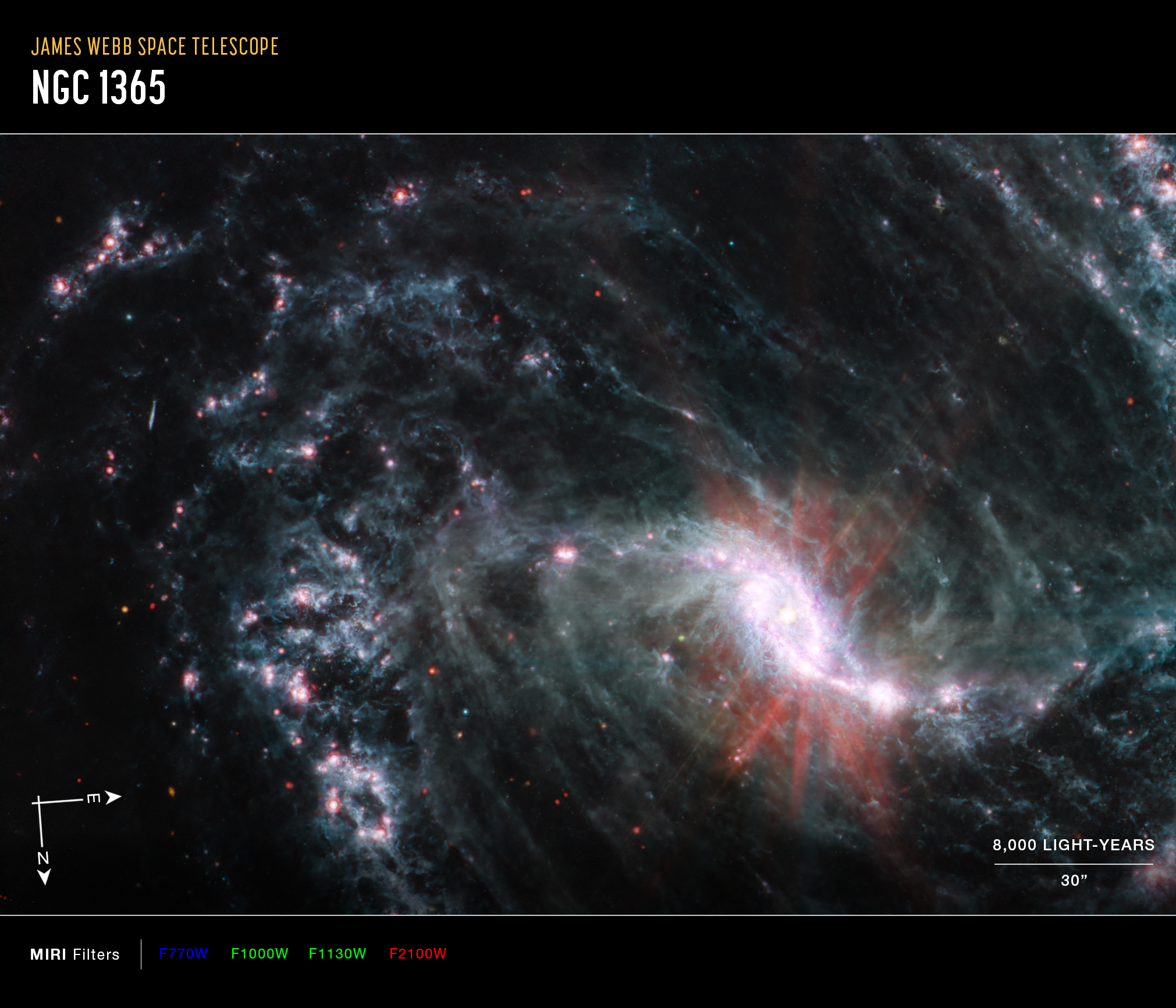
This image of the nearby galaxy NGC 1365, captured by Webb’s Mid-Infrared Instrument (MIRI) shows compass arrows, scale bar, and color key for reference.
The north and east compass arrows show the orientation of the image on the sky. Note that the relationship between north and east on the sky (as seen from below) is flipped relative to direction arrows on a map of the ground (as seen from above).
At the lower right is a scale bar labeled 8,000 light-years, 30 arcseconds. The length of the scale bar is approximately one-fifth the total width of the image. Below the image is a color key showing which MIRI filters were used to create the image and which visible-light color is assigned to each filter. From left to right, MIRI filters are: F770W is blue; F1000W and F1130W are green; and F2100W is red.
About the Object
- R.A. PositionR.A. PositionRight ascension – analogous to longitude – is one component of an object's position.03:33:34.76
- Dec. PositionDec. PositionDeclination – analogous to latitude – is one component of an object's position.-36:08:35.33
- ConstellationConstellationOne of 88 recognized regions of the celestial sphere in which the object appears.Fornax
- DistanceDistanceThe physical distance from Earth to the astronomical object. Distances within our solar system are usually measured in Astronomical Units (AU). Distances between stars are usually measured in light-years. Interstellar distances can also be measured in parsecs.56 million light-years
About the Data
- Data DescriptionData DescriptionProposal: A description of the observations, their scientific justification, and the links to the data available in the science archive.
Science Team: The astronomers who planned the observations and analyzed the data. "PI" refers to the Principal Investigator.This image was created with Webb data from proposal: 2107 (J. Lee).
- InstrumentInstrumentThe science instrument used to produce the data.MIRI
- Exposure DatesExposure DatesThe date(s) that the telescope made its observations and the total exposure time.13 Aug 2022
- FiltersFiltersThe camera filters that were used in the science observations.F770W, F1000W, F1130, F2100W
- Object NameObject NameA name or catalog number that astronomers use to identify an astronomical object.NGC 1365, The Great Barred Spiral Galaxy
- Object DescriptionObject DescriptionThe type of astronomical object.Barred spiral galaxy
- Release DateFebruary 16, 2023
- Science ReleaseNASA’s Webb Reveals Intricate Networks of Gas and Dust in Nearby Galaxies
- CreditNASA, ESA, CSA, Janice Lee (NSF's NOIRLab); Image Processing: Alyssa Pagan (STScI)

These images are a composite of separate exposures acquired by the James Webb Space Telescope using the MIRI instrument. Several filters were used to sample wide wavelength ranges. The color results from assigning different hues (colors) to each monochromatic (grayscale) image associated with an individual filter. In this case, the assigned colors are: Blue: F770W, Green: F1000W+F1130W, Red: F2100W
Related Images & Videos
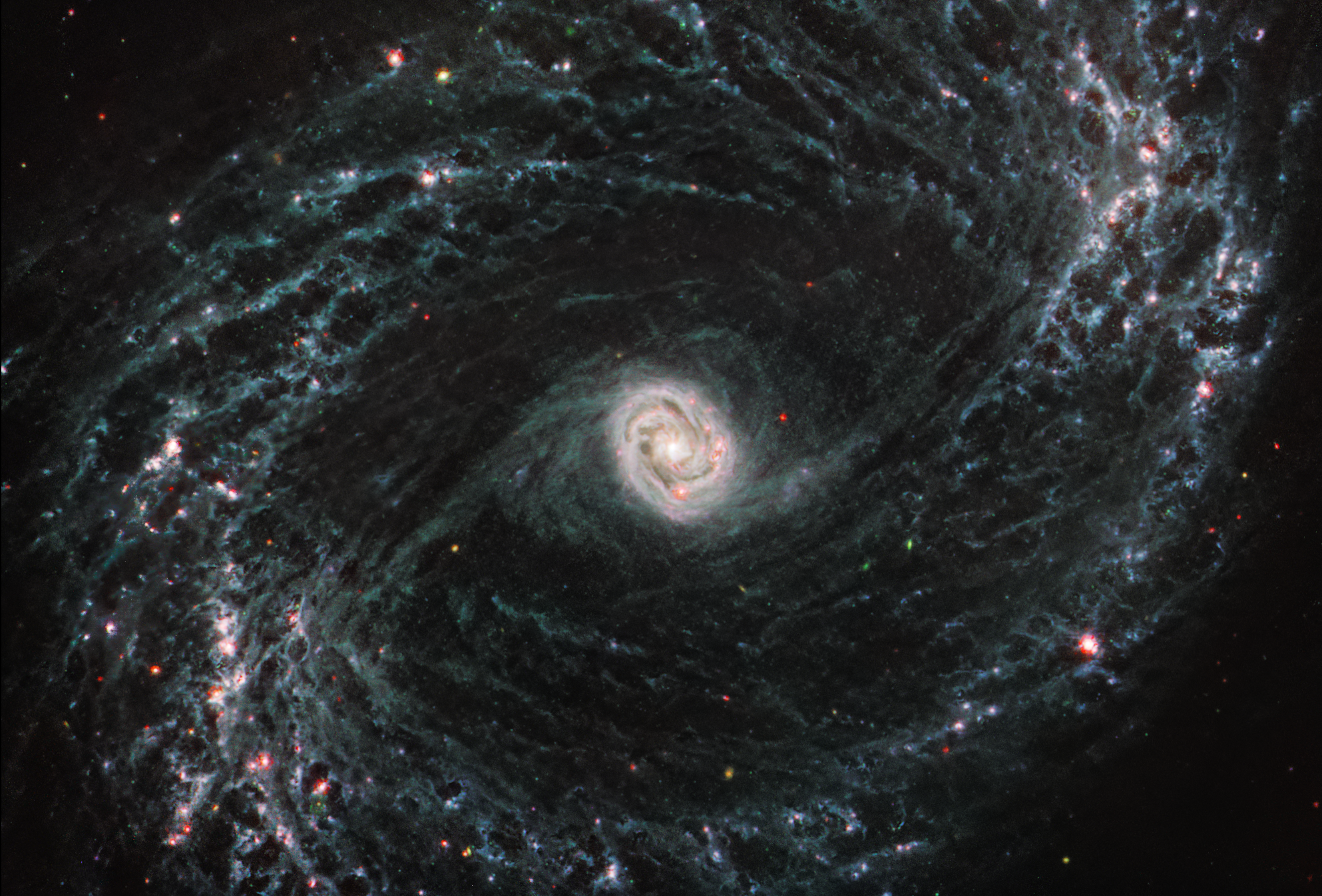
NGC 1433 (MIRI Image)
This image taken by NASA’s James Webb Space Telescope shows one of a total of 19 galaxies targeted for study by the Physics at High Angular resolution in Nearby Galaxies (PHANGS) collaboration. Nearby barred spiral galaxy NGC 1433 takes on a completely new look when observed by...
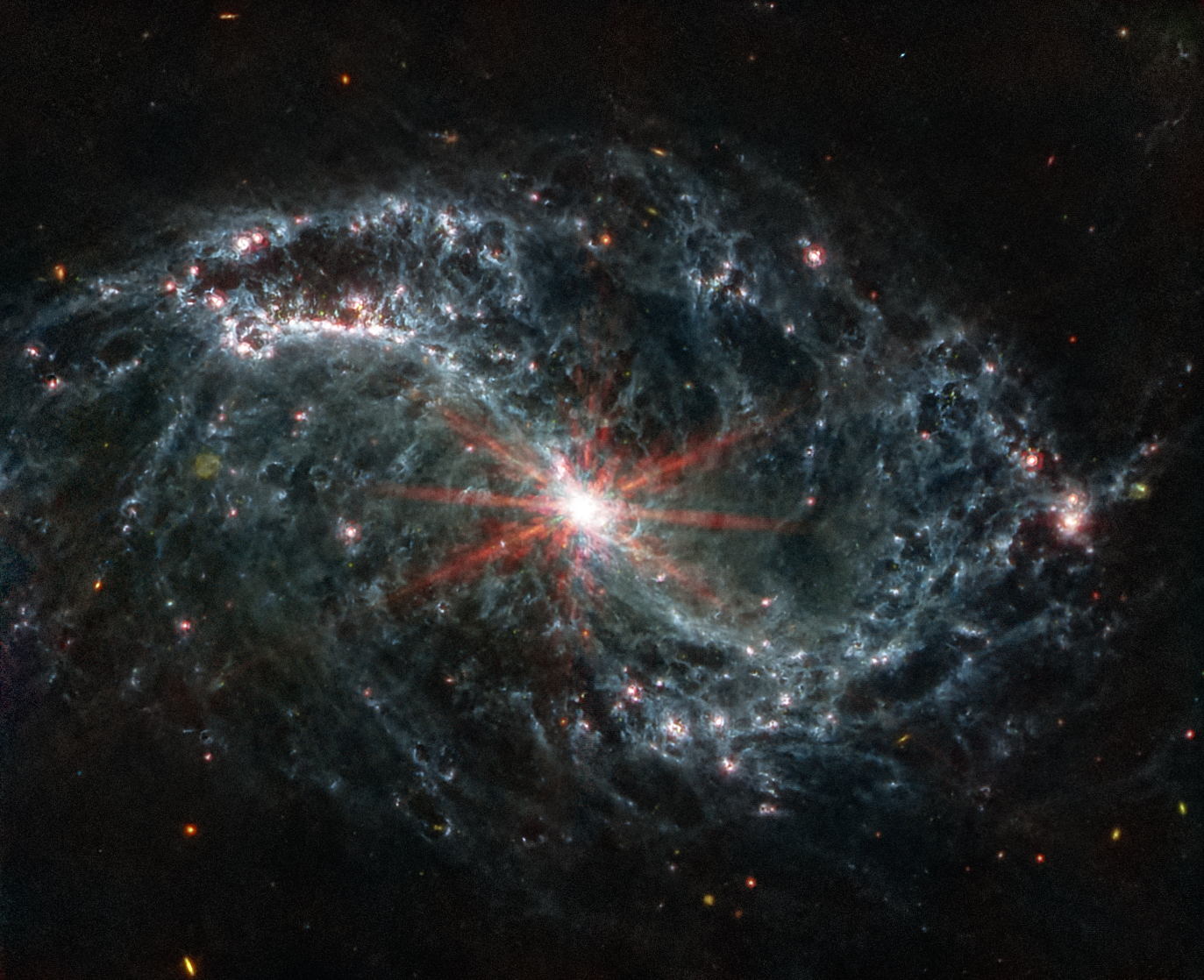
NGC 7496 (MIRI Image)
Scientists are getting their first look with NASA’s James Webb Space Telescope’s powerful resolution at how the formation of young stars influences the evolution of nearby galaxies. The spiral arms of NGC 7496, one of a total of 19 galaxies targeted for study by the Physics at...
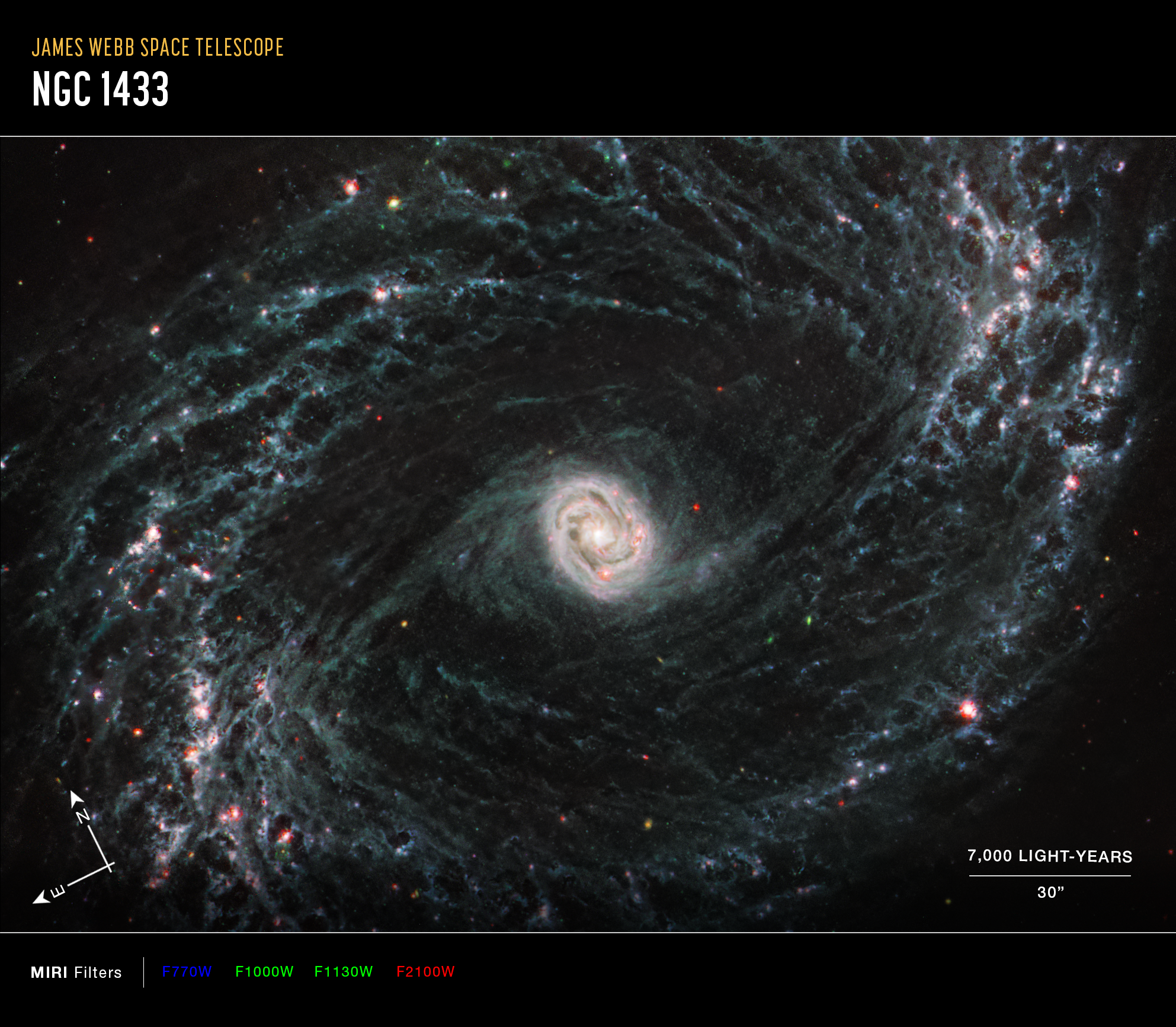
NGC 1433 (MIRI Compass Image)
This image of the nearby galaxy NGC 1433, captured by Webb’s Mid-Infrared Instrument (MIRI) shows compass arrows, scale bar, and color key for reference. The north and east compass arrows show the orientation of the image on the sky. Note that the relationship between north and...
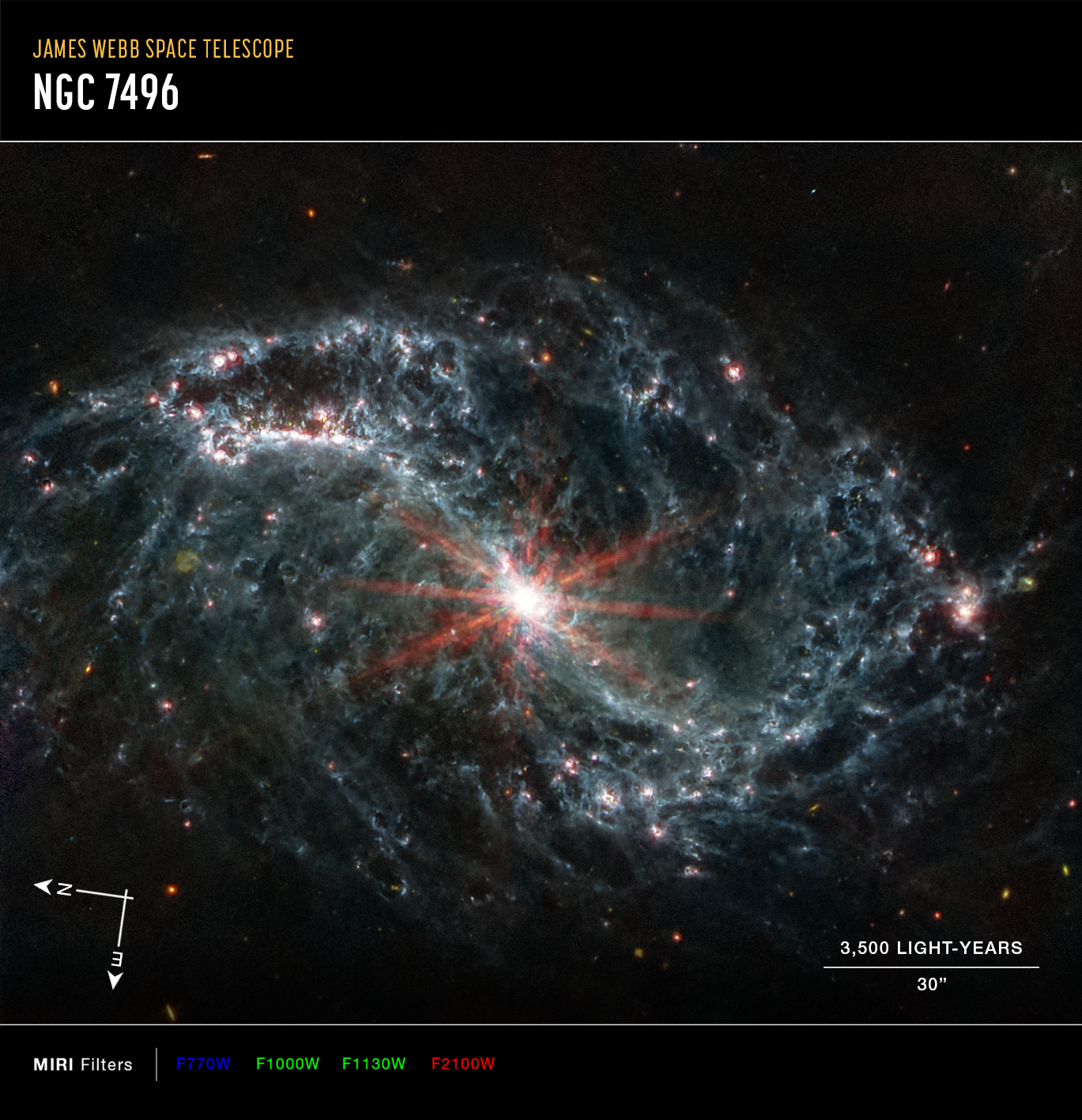
NGC 7496 (MIRI Compass Image)
This image of the nearby galaxy NGC 7496, captured by Webb’s Mid-Infrared Instrument (MIRI) shows compass arrows, scale bar, and color key for reference. The north and east compass arrows show the orientation of the image on the sky. Note that the relationship between north and...
Share
Details
Laura Betz
NASA’s Goddard Space Flight Center
Greenbelt, Maryland
laura.e.betz@nasa.gov
NASA, ESA, CSA, Janice Lee (NSF’s NOIRLab)
Alyssa Pagan (STScI)




























